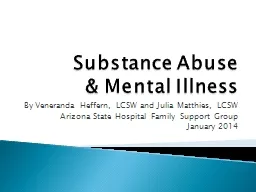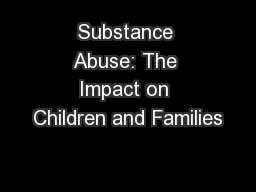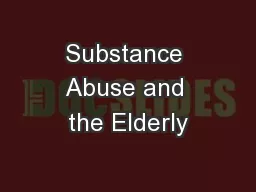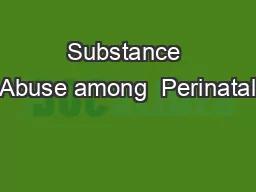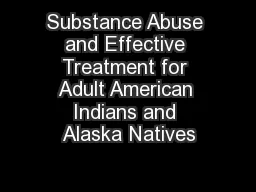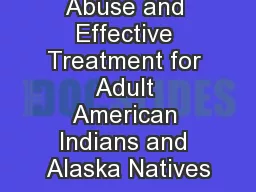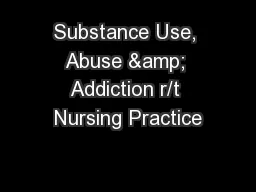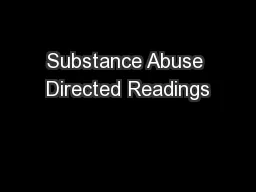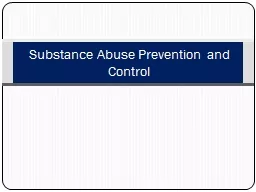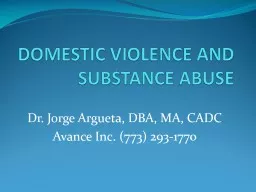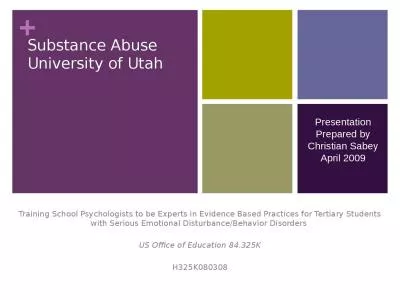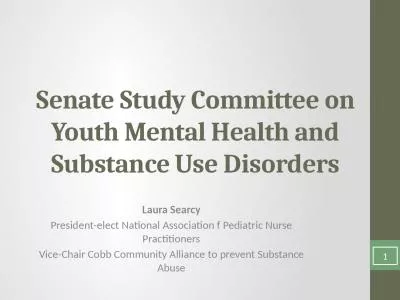PPT-Substance Abuse
Author : lindy-dunigan | Published Date : 2015-10-12
amp Mental Illness By Veneranda Heffern LCSW and Julia Matthies LCSW Arizona State Hospital Family Support Group January 2014 Roughly 50 percent of individuals
Presentation Embed Code
Download Presentation
Download Presentation The PPT/PDF document "Substance Abuse" is the property of its rightful owner. Permission is granted to download and print the materials on this website for personal, non-commercial use only, and to display it on your personal computer provided you do not modify the materials and that you retain all copyright notices contained in the materials. By downloading content from our website, you accept the terms of this agreement.
Substance Abuse: Transcript
Download Rules Of Document
"Substance Abuse"The content belongs to its owner. You may download and print it for personal use, without modification, and keep all copyright notices. By downloading, you agree to these terms.
Related Documents

